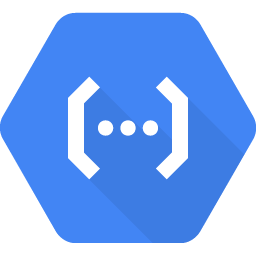[GCP] Create an efficient Cloud Functions development environment [JavaScript]

table of contents
Hello.
I'm Mandai, in charge of Wild on the development team.
Are you familiar with GCP's Cloud Functions?
AWS Lambda for GCP is a serverless computing environment that allows you to easily prepare an execution environment just by deploying code.
It is very useful when you want to run a small piece of code without having to prepare a server, or when you want to quickly run a process that connects services that would be difficult to use with Cloud Pub/Sub alone. It is impossible to upload without it.
Furthermore, if you are responsible for important processing related to actual operations, a development environment is even more necessary.
However, I felt like there was no such thing as information on a development environment for implementing Cloud Functions, so I would like to create an environment that is easy to develop.
Prepare the editor
I recommend VSCode, which natively supports JavaScript
Prepare the module
Build an environment to run code for Cloud Functions locally.
However, all you need is one module provided by Google.
npm install @google-cloud/functions-framework -g
*2021/01/13 The global installation option was missing, so I added it.
With this single module, you can create a web server that behaves like Cloud Functions.
Prepare the project
Cloud Functions allows you to load the required modules through package.json.
Therefore, make the necessary modules readable via npm init.
npm init # Enter appropriate answers to questions about the project
Create a git repository
Personally, I think it's better to manage scripts with git, no matter how simple, so I'll use git init for now.
Cloud Source Repositories for your repository is convenient because it integrates the steps up to deployment.
As of January 2020, there is a limit of 5 users per month, 50 GB capacity, and 50 GB transfer amount, but I think it will fit within the free limit for trial use.
write the code
Cloud Functions scripts require an entry point.
The following is a minimal script with main as the entry point.
template
exports.main = (req, res) => { res.status(200).send('test'); }
In production, you will specify main as the "function to execute."
Next, let's run it locally and check how it works.
local execution
When running locally, run the following command on the command line to start the web server and wait for requests.
functions-framework --target=main
--target option is required and specifies the entry point.
If there are no errors, the web server is running on localhost:8080, so try running it with curl.
curl localhost:8080
If the above command returns "test", it is successful!
This command can be converted into an npm script and configured as follows.
"scripts": { "start": "functions-framework --target=main" },
By adding the above settings, you can run it with npm start.
hot reload
With npm start, you need to manually restart the function-framework every time you change the code.
Since it is a fairly time-consuming task, I would like to introduce hot reloading.
We will introduce a module called npm-watch.
npm install npm-watch
It looks like a wrapper module for nodemon, but since no special settings are required, it was easy to install.
Add npm script.
"scripts": { "start": "functions-framework --target=main", "watch": "npm-watch start" }
Next, add code monitoring settings.
"watch": { "start": "*.js" }
Add the watch key at the top level (same level as main and scripts).
It's a bit complicated, but the command to start it is as follows.
npm run watch
If you do this, npm run start will be executed, but functions-framework will be restarted automatically if any changes are made to the underlying JS files.
The package.json configured so far looks like this:
{ "name": "test", "version": "1.0.0", "description": "", "main": "index.js", "scripts": { "test": "echo \"Error : no test specified\" && exit 1", "start": "functions-framework --target=main", "watch": "npm-watch start" }, "author": "y.mandai", "license ": "ISC", "dependencies": { "@google-cloud/functions-framework": "^1.3.2", "npm-watch": "^0.6.0" }, "watch": { "start ": "*.js" } }
summary
This time, we introduced functions-framework, which is useful when implementing GCP Cloud Functions scripts.
Using this module, I was able to easily try out the behavior of Cloud Functions locally.
When adjusting or testing scripts, restarting functions-framework can be a hassle, so it's even better to build a hot reload environment using npm-watch to make your work more efficient!
lastly
I have opened the system development service site "SEKARAKU Lab" to which I belong.
Beyond is a one-stop service for everything from server design and construction to operation, so if you have any trouble with server-side development, please feel free to contact us.
SEKARAKU Lab: [https://sekarakulab.beyondjapan.com/](https://sekarakulab.beyondjapan.com/)
That's it.

 0
0







